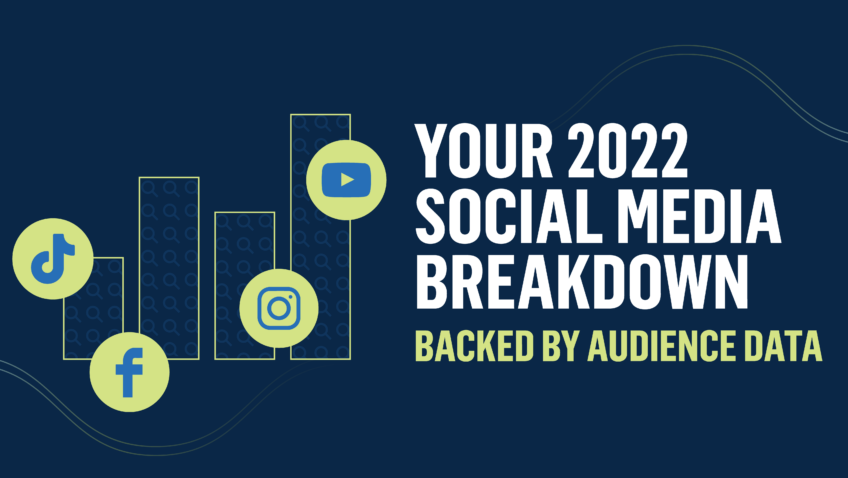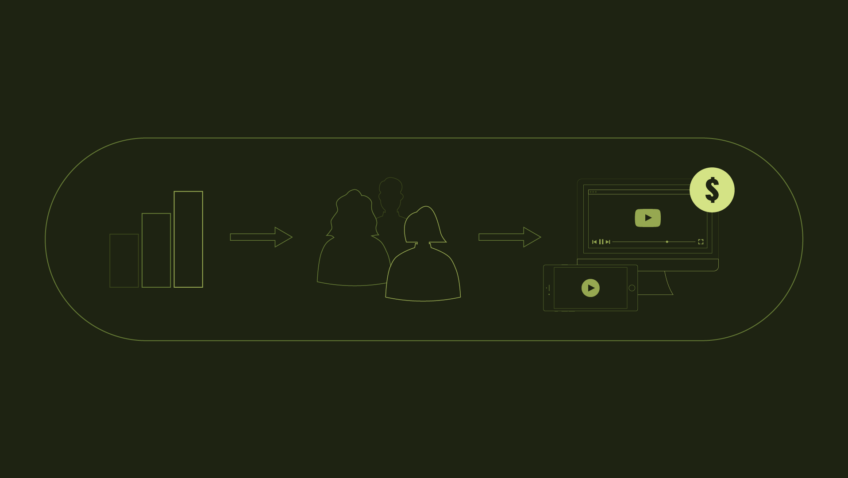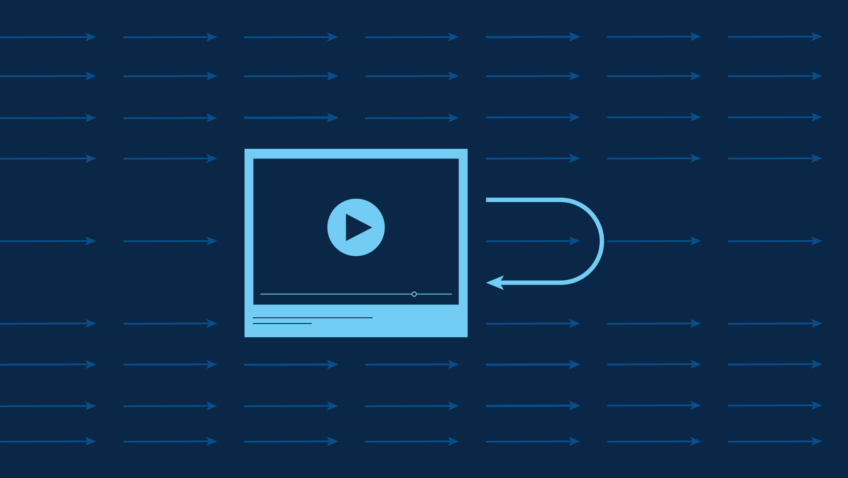Ticket Pricing for Unpredictable Times
These are certainly unpredictable times: with inflation soaring, COVID still around, and increased political and environmental pressures around the world. All of these factors trickle down and make it more difficult than ever for performing arts organizations to make pricing decisions. On one hand, demand is lower than pre-pandemic (our recent study shows ticket sales per performance are down 14% nationwide), which could imply that a price drop is warranted. On the other hand, inflation is soaring, which could imply that a price increase is justified. So what’s an arts organization to do?
Here are some guiding principles for pricing during this volatile time:
Use all the resources available to you.
The best case scenario is that you get your ticket prices as close as possible to matching actual demand at the start of your sales cycle, as this will ultimately lead to higher revenue and attendance numbers. Of course, this is increasingly difficult to do in unpredictable times. But remember—you have a huge pricing resource already available to you: your patron database. The transactional data in your database can give you crucial information regarding behaviors by audience segments, and especially willingness to pay. We are now also in the advantageous position of having a year of data under our belts from after the COVID-19 shutdown. By looking back at your data from 2021-22 to see what price points were most in demand—and how demand might have shifted since before the pandemic — you’ll gain insights to set your prices moving forward.
If you have the resources, we also recommend pairing a review of your transactional data with primary research (such as surveying – we find Conjoint Analysis is best for pricing). Primary research is excellent for measuring FUTURE willingness to pay by segment of current, past, and potential audience members. It will give you a clear view of the value that audiences currently put on your offerings and what price points might help you bring in the most revenue while retaining, reactivating, and acquiring audiences.
By doing the research upfront to get the prices right from the start you’ll end up in a better position to reach your revenue and attendance goals. You can always adjust prices as needed through dynamic pricing and discounting during the sales cycle (should demand drastically shift from the expected course), but relying exclusively on these tools will leave money and audiences on the table.
Consider price increases
Even though demand for performing arts tickets is lower than before the pandemic, we see little evidence that audiences are more price sensitive. In fact, our recent study showed that there was a significant drop in demand for low-priced tickets in the 2021-22 season, while the drop in demand was less severe for higher-priced tickets:
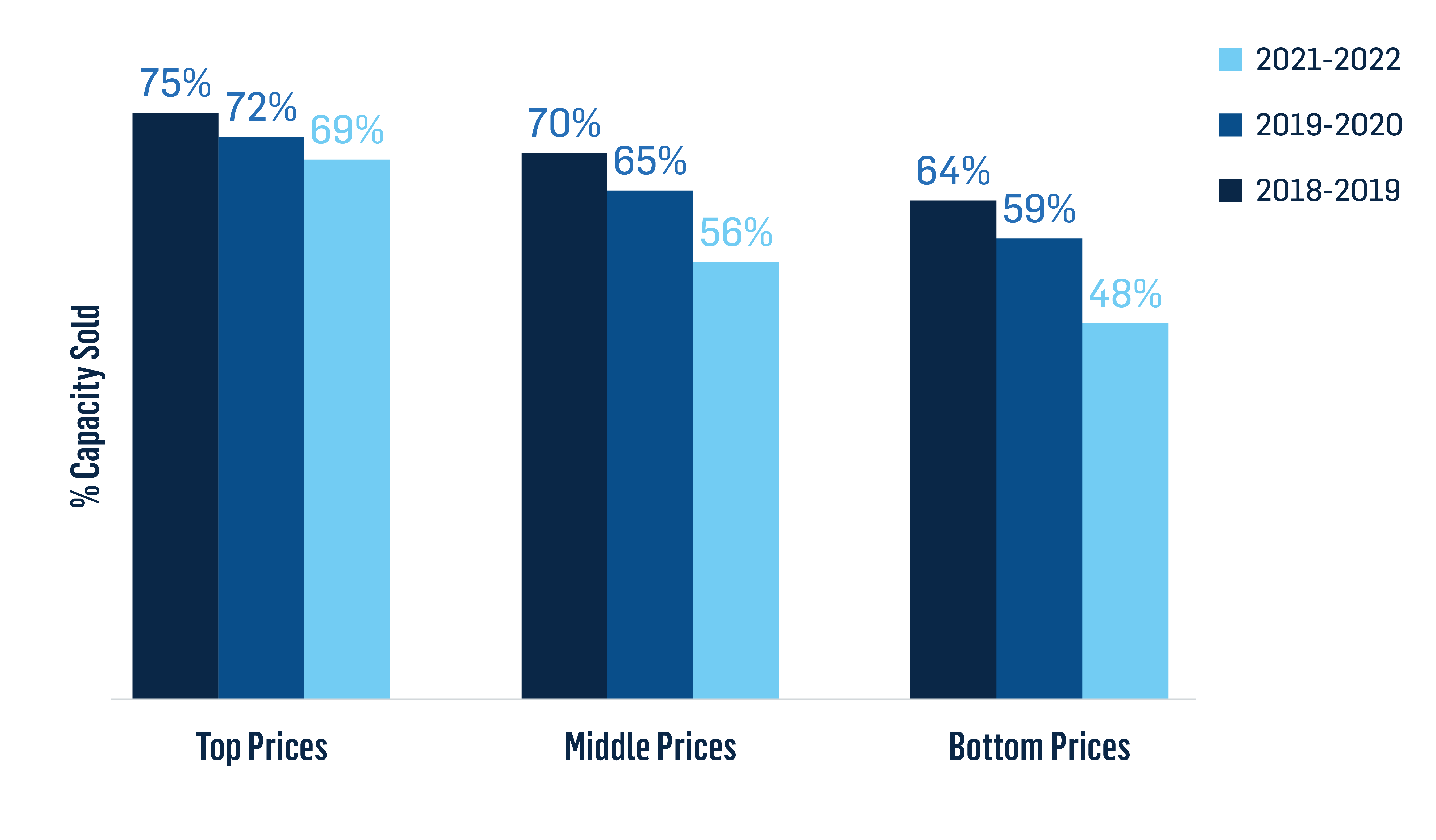
Additionally, we found that organizations that increased their prices during the 2021-22 season saw higher revenue AND higher attendance than organizations that lowered their prices:
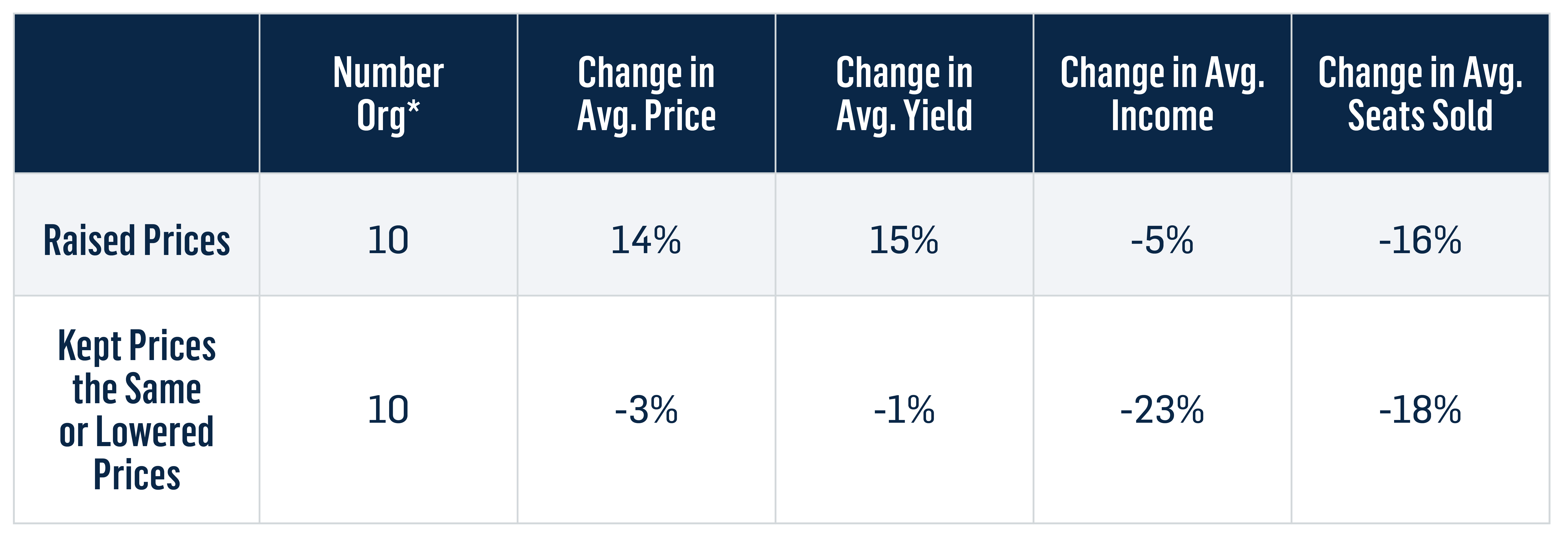
This data shows us that arts organizations should consider raising their ticket prices. Additionally, if you don’t raise prices now, it will be hard to keep up with inflation in the future, which could lead to a long-term decline in revenue.
We recommend, in advance of raising prices, to conduct primary research on audience’s willingness to pay to make sure you’re getting your prices right. And, of course, having a variety of price points that accommodate for audience segments’ varying willingness to pay is essential.
Leverage Radical Pricing for audience growth
Though you should consider raising your ticket prices, you should also have accessible price points available for potential audience members with varying levels of willingness to pay. This is especially true during volatile times, where some people are impacted financially more than others.
This is where Radical Pricing comes in, the practice of using pricing to promote accessibility and inclusivity. In addition to having a variety of price points available, you can also signal accessibility by offering Pay-What-You-Will or Choose-Your-Price seating. Or, you could offer “pay-it-forward” pricing on premium seats—a higher price that a patron can opt to pay in order to subsidize your more accessible ticket prices. Our research has found that many are willing to pay more for their tickets in the interest of making art more available to others.
By simultaneously raising prices and pushing the upper boundaries of where prices can go AND offering a variety of price points and accessibly priced options, you can accommodate for the varying ways that your audience is impacted by global events while growing revenue and attendance.
Plan to adjust revenue goals for COVID spikes (or other unpredictable events)
In the 2022-23 season, it’s very likely that you’ll face unpredictable factors that affect your overall revenue, such as COVID spikes. In our recent study, we saw that the Omicron spike in January of 2022 caused a 29% drop in theatre capacities relative to pre-pandemic sales at that time of year.
Though we don’t know when another pandemic spike—or other event that affects performing arts attendance—will happen, you can put plans in place for if or when it does. You can use data from last year to estimate how much your revenue will be affected if a COVID spike does hit and be prepared to adjust your goals accordingly. Perhaps more importantly, you can set expectations with executives and others in the organization that revenue goals will need to be adjusted when faced with such events. By setting the expectation now, you’ll be prepared for swifter action and response should a COVID spike or similar disaster hit.
A final note—a COVID spike doesn’t necessarily warrant a drop in ticket prices. Targeted discounts may help with increasing capacity sold if needed, but we’ve seen that price isn’t a significant factor in persuading people to attend theatre if they are concerned for their health.
These guiding principles will help you weather the storm of unpredictability and come out strong on the other end. Remember, it may be tempting to lower your prices or make drastic decisions when things are rough, but this will not put you in a good position for recovery. Instead, it may be that raising your prices where you can and adding access points will be the thing to put you in the best situation possible. Now that we are several years into this world-changing pandemic, we have the resources to make thoughtful, smart, and data-driven decisions. Make sure you are leveraging those resources as you look to pricing for the future.
If you need support to get your prices right in an unstable time, we can help. As the leaders in ticket pricing for nonprofit performing arts, we’ll help you maximize income while maintaining accessibility regardless of audience size. Contact us.
Jamie Alexander is a Director at JCA Arts Marketing. JCA is a proud sponsor of Boot Camp 2022.




